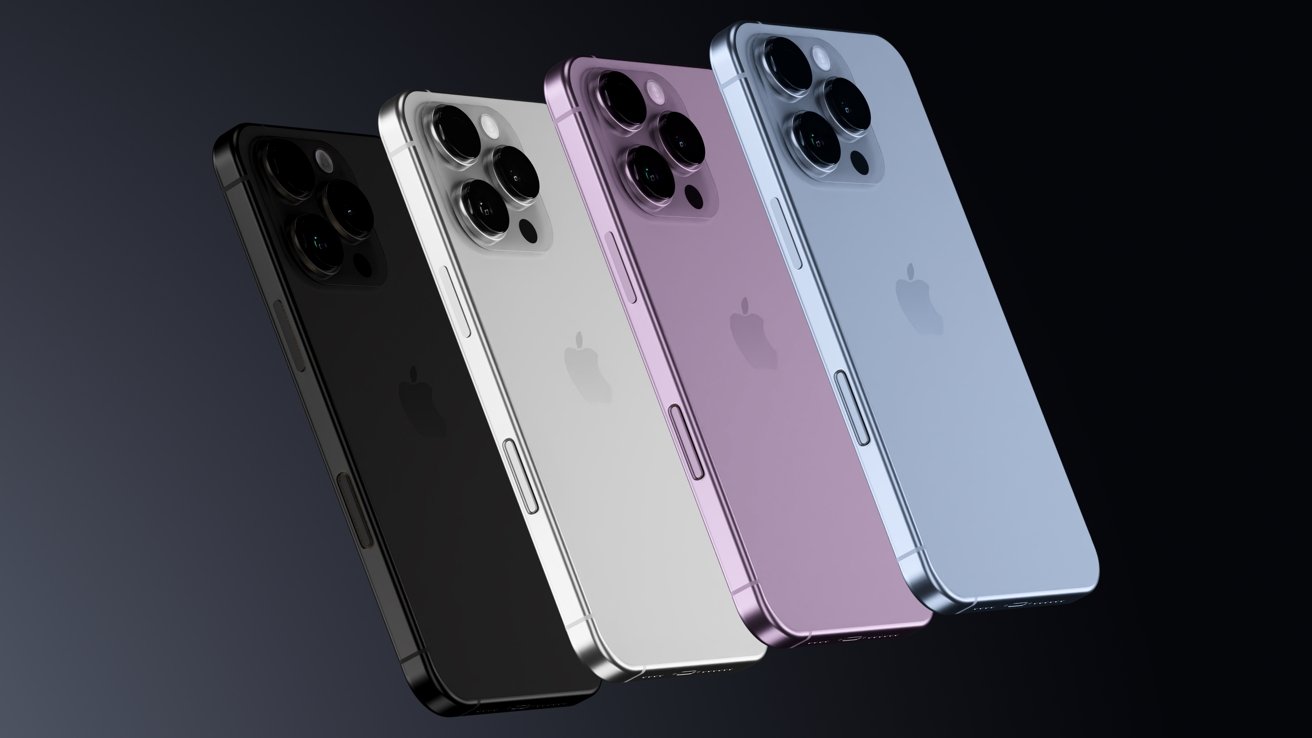All iPhone 16 models rumored to have thinnest bezels yet
A new report claims that Apple and display manufacturers including Samsung, are working with a new system to markedly reduce the bezel around the iPhone screen.
Apple has made no secret that it would like to get rid of bezels entirely, having made much progress reducing them, and also being constantly rumored to make them ever smaller with the next iPhone. Apple has also been asking suppliers to work on it.
According to Seoul-based current affairs publication, Sisa Journal-E, Apple is about to achieve its thinnest bezels yet, and do so across the whole of the iPhone 16 range. No specific measurements have been revealed, but the publication says that Apple is using the "ultra-thin" Border Reduction Structure (BRS) technology.
Significantly, BRS is reportedly now also being used by Samsung Display, LG Display, and BOE — Apple's screen suppliers.
The report claims to concern the whole area around the screen, but it includes comments from unnamed officials that suggest it might not apply to the bottom bezel.
"There have been efforts to reduce the bezel on four sides of the smartphone, including the top and bottom, and sides, but we have not greatly reduced the bottom bezel," said the official. "In fact, the borderless technology that reduces the bottom bezel has been applied to some other products before, but I know that there was a problem with the heating part."
This official then says that heat dissipation technologies have been improved, suggesting there may yet be some reduction in the bottom bezel. A separate display industry official told the publication that BRS is not a very difficult technology for the screen suppliers to adopt.
Previously, reports have claimed that the iPhone 16 Pro will have a larger screen than its predecessor, the current iPhone 15 Pro. The regular, non-Pro iPhone 16 models are expected to remain the same as their iPhone 15 equivalents.
Sisa Journal-E does not have a known track record in covering Apple. Its parent publication, the print Sisa Journal, has been running since 1989, though it was reportedly also at the center of a scandal in 2006 when its management blocked publication of articles that were critical of Samsung.
 William Gallagher
William Gallagher











 Mike Wuerthele
Mike Wuerthele

 Malcolm Owen
Malcolm Owen
 Chip Loder
Chip Loder


 Christine McKee
Christine McKee
 Michael Stroup
Michael Stroup








4 Comments
Well, how might this affect how thick a case can be? Also, what about drop protection on the sides of pbone? Would that be less too?
I’m prolly in the minority but I think the iPhone 11 Pro Max was a better phone than my iPhone 14 Pro Max because the thin bezels are obnoxious.